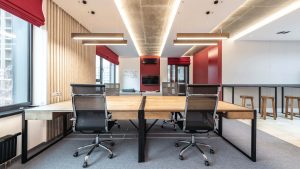
Creating a detailed scale model of a large project in Dubai requires meticulous planning, skilled craftsmanship, and technological expertise. These models serve as crucial tools for showcasing the vision of the development, aiding in decision-making, and engaging stakeholders. In this article, we will explore the various phases involved in constructing such scale models and the typical timelines required to complete them.
Pre-Modeling Phase:
Before the construction of the scale model begins, an extensive pre-modeling phase takes place. This phase involves essential preparatory work, including:
a. Project Understanding:
The model-making team collaborates with architects, urban planners, and developers to gain a comprehensive understanding of the project’s design, site plans, and architectural drawings. This step ensures that the model accurately represents the vision and objectives of the development.
b. Scale Selection and Design Brief:
Based on project requirements and the desired level of detail, the appropriate scale is selected for the model. The design brief is prepared, outlining the model’s specifications, materials to be used, and the expected completion timeline.
c. Resource Allocation and Budgeting:
The model-making team determines the resources required, including materials, labor, and equipment. A budget is established, taking into account factors such as the scale’s complexity and the expected timeframe for completion.
Construction Phase:
The construction phase involves transforming the project’s design and vision into a tangible scale model. It can be divided into several sub-phases:
a. Prototype Creation:
In complex projects, a small-scale prototype or 3D digital model may be created initially to validate the design’s accuracy and address any potential issues. This step ensures that the final scale model Dubai accurately reflects the project’s intent.
b. Material Sourcing:
The model-making team procures high-quality materials, such as acrylic, wood, resin, metal, and other components required for the construction. These materials are carefully chosen to match the project’s specifications and adhere to the desired level of detailing.
c. Laser Cutting and 3D Printing:
Advanced technologies like laser cutting and 3D printing are employed to fabricate intricate components of the model. These technologies significantly expedite the process and enhance precision in reproducing the building’s architectural elements.
d. Assembly and Construction:
The model-making team begins assembling the various components, including buildings, landscaping, roads, and other structures. This phase demands meticulous attention to detail to ensure the accurate representation of the project.
e. Lighting and Illumination:
If the scale model incorporates lighting features to simulate the actual project’s illumination, this stage involves carefully placing LEDs or other lighting fixtures to achieve the desired effect.
f. Fine Details and Finishing:
The model is meticulously refined and fine-tuned to capture intricate details, such as building facades, landscaping elements, and human-scale objects. The finishing touches ensure the model achieves the desired aesthetic appeal.
Quality Control and Validation:
The quality control phase is crucial in ensuring the accuracy and fidelity of the scale model. This step involves a meticulous review of the model’s components to verify adherence to the project’s design, scale, and materials. Any discrepancies or inaccuracies are addressed and corrected during this phase.
Testing and User Experience:
For certain projects, particularly those involving interactive or virtual components, user experience testing may be conducted to evaluate the model’s effectiveness in conveying the development’s impact and functionality to stakeholders.
Transport and Installation:
For large-scale models or those destined for public exhibitions, transportation and installation logistics are planned. The model is carefully packed and transported to its intended location, where it is installed for public viewing.
Completion Timelines:
The time required to construct a detailed scale model of a large project in Dubai varies significantly depending on the project’s complexity, size, and the desired level of detailing. The typical completion timelines can range from several weeks to several months:
a. Small to Medium-Sized Projects:
For small to medium-sized projects, such as individual buildings or small residential complexes, the construction of a detailed scale model can usually be completed within 4 to 8 weeks.
b. Large-Scale Developments:
Large-scale developments, such as master-planned communities, commercial complexes, or urban regeneration projects, require more extensive efforts. The construction of detailed scale models for such projects can take anywhere from 3 to 6 months or more, depending on their complexity and size.
c. Highly Complex and Ambitious Projects:
For exceptionally complex and ambitious projects, like large mixed-use developments or city-level planning models, the construction timeline can extend beyond 6 months, potentially even up to a year or more.
Factors Influencing Timelines:
Several factors influence the timeline for constructing detailed scale models:
a. Scale and Level of Detail:
Larger scales and higher levels of detailing require more time and precision during construction.
b. Available Resources:
The availability of skilled model-makers, advanced equipment, and materials can impact the speed of model construction.
c. Project Changes and Revisions:
If the project undergoes design changes or revisions during the model-making process, it may extend the completion timeline.
d. Complexity of the Project:
The complexity of the development, the number of buildings, and the intricacy of architectural elements can influence the time required for the model’s construction.
e. Workload and Capacity:
The model-making team’s workload and capacity to handle multiple projects simultaneously can affect the timeline.
Advancements in Technology and Efficiency:
Recent advancements in technology, such as computer-aided design (CAD), 3D printing, and laser cutting, have significantly improved the efficiency and precision of constructing detailed scale models. These tools allow model-making teams to streamline processes and reduce construction timelines while maintaining high-quality standards.
Collaboration with Project Stakeholders:
The successful construction of a detailed scale model often involves close collaboration with various project stakeholders, including architects, developers, urban planners, and marketing teams. Regular meetings and consultations are conducted to ensure that the model accurately reflects the project’s vision and aligns with stakeholders’ expectations.
Iterative Design and Feedback Loop:
During the construction process, model-makers may create multiple iterations and prototypes to gather feedback from stakeholders. This iterative approach allows for refinements and adjustments to be made, ensuring that the model precisely captures the essence of the development.
Conclusion: Constructing a detailed scale model of a large project in Dubai is a labor-intensive and multi-faceted process that requires careful planning, craftsmanship, and adherence to strict timelines. The project’s size, complexity, desired level of detailing, and the availability of resources all play vital roles in determining the construction timeline. With the aid of advanced technologies, model-making teams can now create highly accurate and visually appealing scale models more efficiently, helping stakeholders visualize, analyze, and make informed decisions about ambitious real estate development





